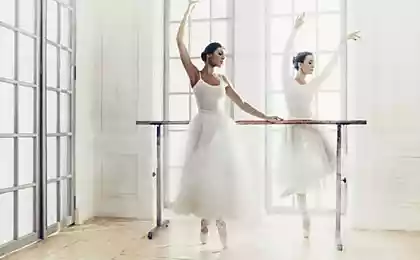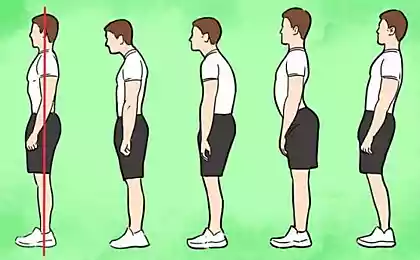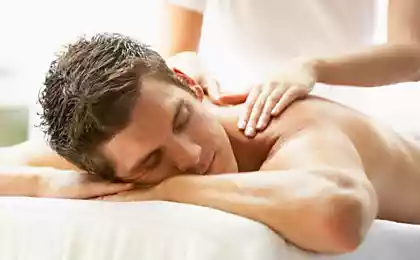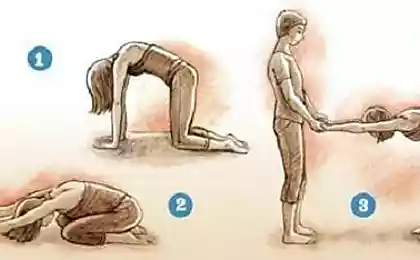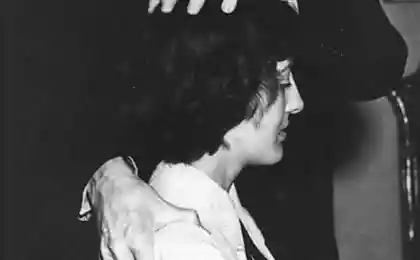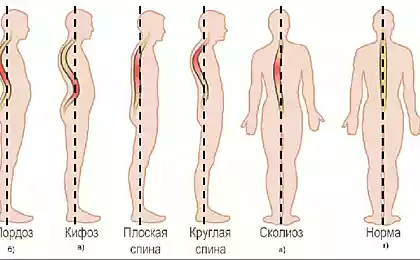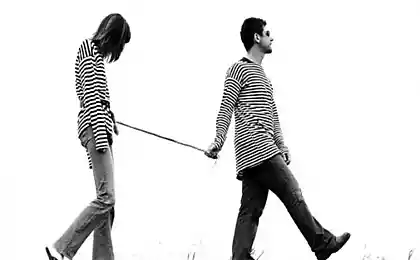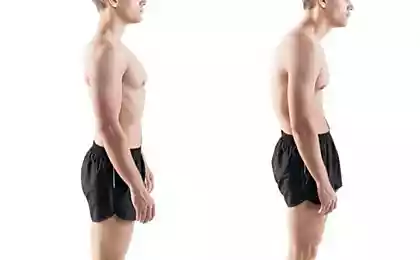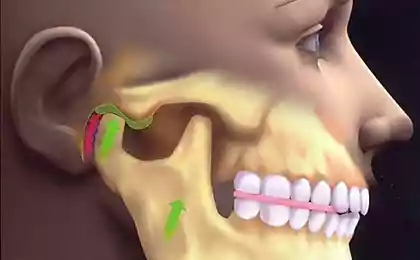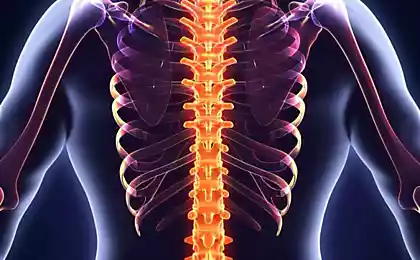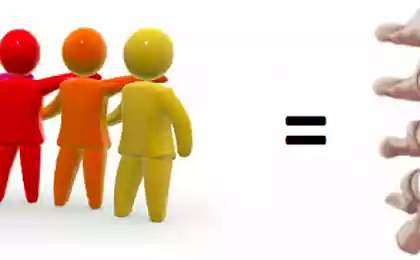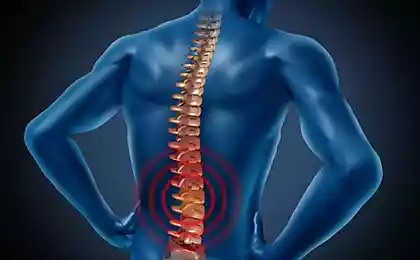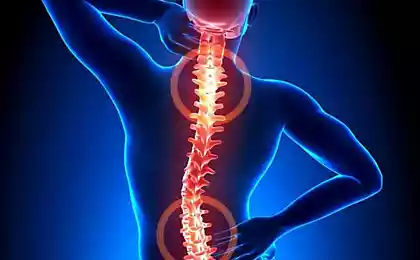563
Why posture correctors are rarely helpful
Let us tell you why posture correctors in the form in which they exist now, will help only in a very limited number of cases, and in some situations it may harm.
The human spine consists of divisions: cervical, thoracic, lumbar, sacral, and coccygeal.
Also in the spine is what is called physiological curves. Sacral curvature (kyphosis) of the back arched, the lumbar curvature (lordosis) arched forward, the thoracic curve (kyphosis) arched back, the cervical curve (lordosis again) arched forward. Thus the lateral curves of the spine (scoliosis) in the rule are either absent or very small.
If we think of the spine as the main mast of our ship, the ship will serve as a set of "pelvic bones + sacrum".
For a correct and beautiful posture responds to a variety of factors. The main role in it plays the so-called postural nervous system (from the Latin positura — body position in space). It postural the nervous system is responsible for the preservation and maintenance of the body in space both in statics and in dynamics. You have to understand that postural nervous system — a rather conditional thing. That is, it is for everyone, but the highlight by far the core is quite difficult. As well, it strictly depends not only on signals from muscles and joints, but also from signals coming from different organs and feelings of man. France is actively developing such a direction of medicine as "Posturology", which allocates the "inputs" postural nervous system (hereinafter — NTC) — i.e. all the receptors, which gives the human brain an understanding about his presence in space. Posturology identifies the following "inputs" of the postural system — skin sensitivity (proprioception), bone-articulate feeling (deep proprioception), vision, vestibular apparatus, temporomandibular joint (and the occlusal plane of the teeth), stop feeling.
When violations on the part of any "entry" of the PNs in humans may be a violation of the balance up to the phenomena of dizziness, feelings of disorientation in space — although this is already a serious phenomenon. Often patients come to the doctor with a principal and primary complaints of pain and fatigue in the back.
Let's try to understand why these pains occur.
Take a person whose work involves prolonged sitting posture at the computer. "Doctor, I have a very sore lower back/neck/thoracic after work. Yes, 7-8 hours at the computer per day. No, when I go home standing on the bus, the pain is not so."
Prolonged sitting posture, often also incorrectly organized work space (I doubt that all the monitors are at eye level and the chair is properly chosen) leads to a decrease in blood flow and malfunction of the muscles of the pelvis. Women often notice that the wings of the pelvis they are on a different level (men less to his look and less about this mention). Wrong muscles leads to various versions of "skew" of the pelvis — and if the ship is a curve deck, and the mast exactly to be never. Occurs what is called "instability of the pelvis". In this case, the instability is merely a consequence of muscle imbalance.
Eighty nine million ten thousand four hundred fifty six
Misalignment of the pelvic bones inevitably leads to the formation of scoliosis in the upper spine. Changed tonicity-force balance of the muscles, under the influence of improper muscle pull the vertebrae are fixed in a shifted position. Nervous system, being very intelligent, understands that if the muscle starts to work in full force, the vertebra will shift even more, resulting in muscle the command is given — "work less". "To expel" bad working a muscle from his position as a negligent employee, the body can't — so it is for someone to recycle. Most often the one who performs a similar function (as in life).
A classic example that comes to mind — the shift of the head forward and down (often with increased kyphosis in the thoracic spine), resulting in the vertebrae in the cervical spine and cervical-thoracic transition are fixed in the wrong position, long extensor of the neck start to work less, and their function trying to take the muscles of the shoulder girdle — most often it is the upper portion of the trapezius muscles. Where there is pain.
Seventy two million four hundred ninety seven thousand four hundred forty eight
Manual therapy (in the classical "narrow-minded" sense) deals with the fact that "crunches the spine," hoping that when the doctor removes the pathological fixation of the vertebrae, the muscles and "feel" yourself healthy and able to decline, and people will immediately become to hold back. It works well when the person is young enough, or when the compensatory abilities of the body enough to recover. However, when the problem lasts for a long time, the muscles themselves is a tutorial to work properly, and without their recovery and subsequent consolidation in the form of exercises get rid of the problem becomes quite difficult.
Briefly, from the foregoing we can formulate the following conclusion: the violation of the stereotype correct posture is not the only reason in fact violations of the posture.
This, in fact, lies the imperfection and inadequacy of correctors posture. If a man not work correctly the long extensors of the neck, for example, due to fixation or displacement of the vertebrae in the thoracic spine, from the fact that people will try to keep the neck straight, there can be different things. First, no matter how it was strange, time after time accustoming himself to hold his head, the muscles may "be involved" — if a fixation of the vertebrae of the recent instability in the cervical spine to not develop in time, and compensatory capabilities of the organism permit. Second, nothing can happen. Ie and the neck of the person themselves will not learn to hold her steady, and nothing much bad will happen (again, if the compensatory abilities of the body allow). Thirdly, a person may occur the deterioration of any compensatory "act out" other parts of the spine, or worse, pain in the shoulder girdle (muscles, "processing for quitters", will recycle even more).
But in the global sense of the chances that man will be better, quite a few. And the same problem with muscular instability the pelvis the person will not get absolutely nowhere — posture corrector just physically can't make right and friendly to work complex "the middle gluteal muscles — obliques — rectus muscles of the thigh — gluteal large" (if we consider muscular stabilization of the pelvic bones).
Muscles can be damaged in different ways (reboot, compensatory shortening etc.), but that's a topic for a completely separate discussion. published by P. S. And remember, only by changing their consumption — together we change the world! ©
Join us in Facebook , Vkontakte, Odnoklassniki
Source: geektimes.ru/post/266746/
The human spine consists of divisions: cervical, thoracic, lumbar, sacral, and coccygeal.
Also in the spine is what is called physiological curves. Sacral curvature (kyphosis) of the back arched, the lumbar curvature (lordosis) arched forward, the thoracic curve (kyphosis) arched back, the cervical curve (lordosis again) arched forward. Thus the lateral curves of the spine (scoliosis) in the rule are either absent or very small.
If we think of the spine as the main mast of our ship, the ship will serve as a set of "pelvic bones + sacrum".
For a correct and beautiful posture responds to a variety of factors. The main role in it plays the so-called postural nervous system (from the Latin positura — body position in space). It postural the nervous system is responsible for the preservation and maintenance of the body in space both in statics and in dynamics. You have to understand that postural nervous system — a rather conditional thing. That is, it is for everyone, but the highlight by far the core is quite difficult. As well, it strictly depends not only on signals from muscles and joints, but also from signals coming from different organs and feelings of man. France is actively developing such a direction of medicine as "Posturology", which allocates the "inputs" postural nervous system (hereinafter — NTC) — i.e. all the receptors, which gives the human brain an understanding about his presence in space. Posturology identifies the following "inputs" of the postural system — skin sensitivity (proprioception), bone-articulate feeling (deep proprioception), vision, vestibular apparatus, temporomandibular joint (and the occlusal plane of the teeth), stop feeling.
When violations on the part of any "entry" of the PNs in humans may be a violation of the balance up to the phenomena of dizziness, feelings of disorientation in space — although this is already a serious phenomenon. Often patients come to the doctor with a principal and primary complaints of pain and fatigue in the back.
Let's try to understand why these pains occur.
Take a person whose work involves prolonged sitting posture at the computer. "Doctor, I have a very sore lower back/neck/thoracic after work. Yes, 7-8 hours at the computer per day. No, when I go home standing on the bus, the pain is not so."
Prolonged sitting posture, often also incorrectly organized work space (I doubt that all the monitors are at eye level and the chair is properly chosen) leads to a decrease in blood flow and malfunction of the muscles of the pelvis. Women often notice that the wings of the pelvis they are on a different level (men less to his look and less about this mention). Wrong muscles leads to various versions of "skew" of the pelvis — and if the ship is a curve deck, and the mast exactly to be never. Occurs what is called "instability of the pelvis". In this case, the instability is merely a consequence of muscle imbalance.
Eighty nine million ten thousand four hundred fifty six
Misalignment of the pelvic bones inevitably leads to the formation of scoliosis in the upper spine. Changed tonicity-force balance of the muscles, under the influence of improper muscle pull the vertebrae are fixed in a shifted position. Nervous system, being very intelligent, understands that if the muscle starts to work in full force, the vertebra will shift even more, resulting in muscle the command is given — "work less". "To expel" bad working a muscle from his position as a negligent employee, the body can't — so it is for someone to recycle. Most often the one who performs a similar function (as in life).
A classic example that comes to mind — the shift of the head forward and down (often with increased kyphosis in the thoracic spine), resulting in the vertebrae in the cervical spine and cervical-thoracic transition are fixed in the wrong position, long extensor of the neck start to work less, and their function trying to take the muscles of the shoulder girdle — most often it is the upper portion of the trapezius muscles. Where there is pain.
Seventy two million four hundred ninety seven thousand four hundred forty eight
Manual therapy (in the classical "narrow-minded" sense) deals with the fact that "crunches the spine," hoping that when the doctor removes the pathological fixation of the vertebrae, the muscles and "feel" yourself healthy and able to decline, and people will immediately become to hold back. It works well when the person is young enough, or when the compensatory abilities of the body enough to recover. However, when the problem lasts for a long time, the muscles themselves is a tutorial to work properly, and without their recovery and subsequent consolidation in the form of exercises get rid of the problem becomes quite difficult.
Briefly, from the foregoing we can formulate the following conclusion: the violation of the stereotype correct posture is not the only reason in fact violations of the posture.
This, in fact, lies the imperfection and inadequacy of correctors posture. If a man not work correctly the long extensors of the neck, for example, due to fixation or displacement of the vertebrae in the thoracic spine, from the fact that people will try to keep the neck straight, there can be different things. First, no matter how it was strange, time after time accustoming himself to hold his head, the muscles may "be involved" — if a fixation of the vertebrae of the recent instability in the cervical spine to not develop in time, and compensatory capabilities of the organism permit. Second, nothing can happen. Ie and the neck of the person themselves will not learn to hold her steady, and nothing much bad will happen (again, if the compensatory abilities of the body allow). Thirdly, a person may occur the deterioration of any compensatory "act out" other parts of the spine, or worse, pain in the shoulder girdle (muscles, "processing for quitters", will recycle even more).
But in the global sense of the chances that man will be better, quite a few. And the same problem with muscular instability the pelvis the person will not get absolutely nowhere — posture corrector just physically can't make right and friendly to work complex "the middle gluteal muscles — obliques — rectus muscles of the thigh — gluteal large" (if we consider muscular stabilization of the pelvic bones).
Muscles can be damaged in different ways (reboot, compensatory shortening etc.), but that's a topic for a completely separate discussion. published by P. S. And remember, only by changing their consumption — together we change the world! ©
Join us in Facebook , Vkontakte, Odnoklassniki
Source: geektimes.ru/post/266746/
